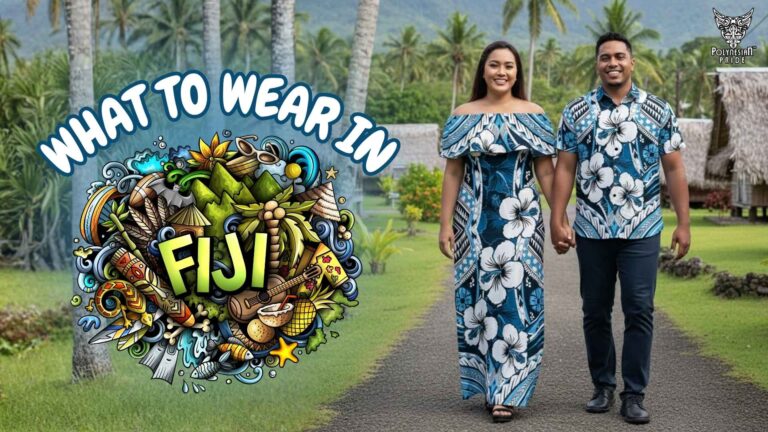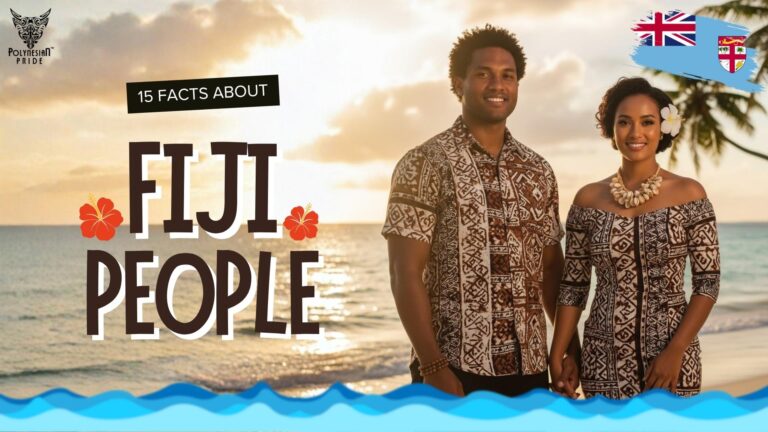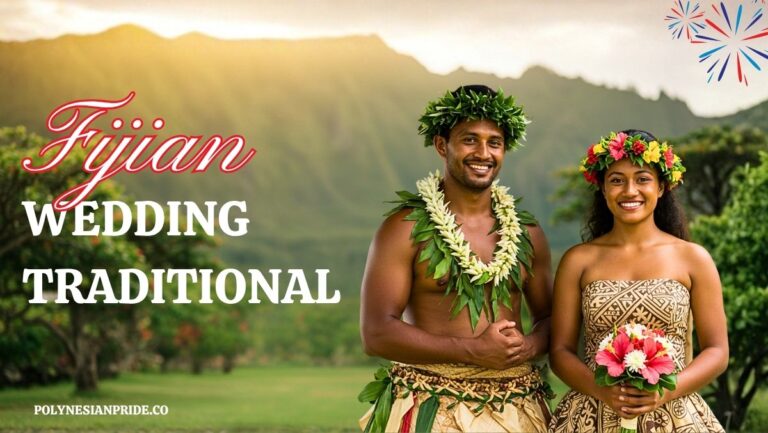Traditional Fiji Tattoo – Sacred Art of Identity
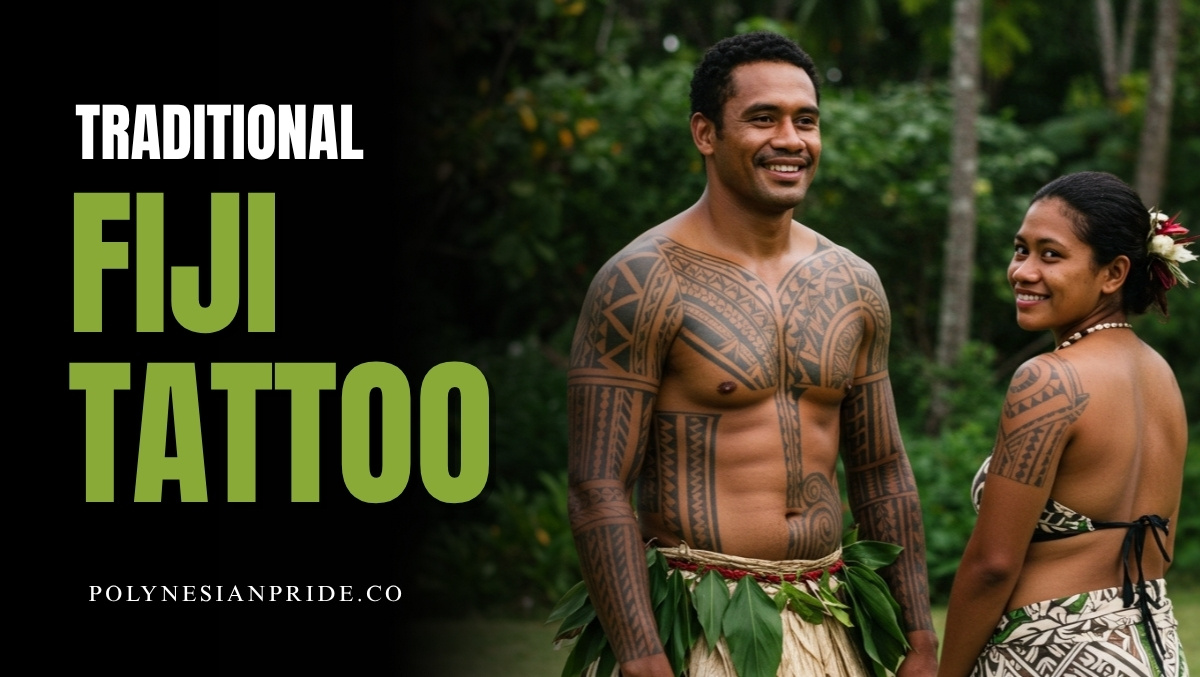
Traditional Fiji tattoos are a sacred art form that intertwines spirituality, identity, and ancestral pride. This article explores their origins, meanings, and symbolism — from ancient indigenous tattoo rituals of Fiji and the Veiqia tradition of Fijian women to the tools, patterns, and cultural revival shaping the art today.
Rooted in Polynesian heritage tattoos and South Pacific tattoo art, these markings embody both heritage and faith. Guided by the wisdom of Fijian Chiefs and Elders, this timeless practice remains a living bridge between past and present, body and spirit.
The Origins and Symbolism of Tattooing in Fiji
Traditional Fiji tattooing dates back thousands of years, forming a vital part of island identity. Each tattoo was not just an adornment — it was a living symbol of faith, courage, and belonging within the tribe.
Ancestral Roots and Oceanic Influence
The origins of Fijian tattooing stem from the vast Oceanic tattoo culture, where islanders across Polynesia and Melanesia exchanged artistic styles, rituals, and beliefs through centuries of voyaging. Tattoos became visible records of identity — a sacred link to nature, the sea, and the gods.
- Tribal body markings identified not only clan membership but also specific lineages and social rank. Certain motifs were reserved for high-born families or warriors recognized by the chief.
- Tattoo ceremonies, conducted by Fijian Elders or designated masters (turaga), followed precise spiritual protocols. Participants underwent purification rituals involving coconut oil, herbs, and sacred chants.
- The process integrated indigenous tattoo rituals in Fiji, where offerings of kava and food were made to ancestral spirits to bless the session and protect both artist and recipient.
- Pain held meaning — enduring it with dignity was seen as a passage of spiritual purification, transforming the act into a dialogue between body and spirit.
Every stroke of ink represented more than art; it was a dialogue with the past — a way for Fijians to carry their ancestry upon their skin.
Sacred Symbolism and Social Structure
Every motif and pattern in Fijian tribal tattoo designs carried layers of sacred symbolism, reflecting one’s spiritual purpose and position in society. Tattoos conveyed values central to Fijian body art history — strength, loyalty, and kinship.
- For Fijian Chiefs, tattoos signified divine right and spiritual authority, connecting them to the gods and legitimizing their leadership. The patterns often featured symmetrical motifs representing balance, order, and cosmic harmony.
- For warriors, tattoos displayed courage and loyalty. Common motifs included shark teeth for strength, spearhead lines for protection, and geometric spirals for endurance — each mark testifying to bravery in battle and service to the tribe.
- For women, particularly those who practiced veiqia, tattoos symbolized beauty, maturity, and readiness for family life. These Fijian female tattoo patterns highlighted social grace and the sacred role of women as cultural bearers.
- For the community, tattoos unified generations. Matching motifs within families represented kinship, while shared ceremonial markings reinforced tribal solidarity and faith in ancestral protection.
Together, these ancestral markings in Fiji created a visual history — one that captured not only achievements and hierarchy but also the emotional and spiritual essence of Fijian life. Each body became a living manuscript, inked with the memory of faith and belonging.
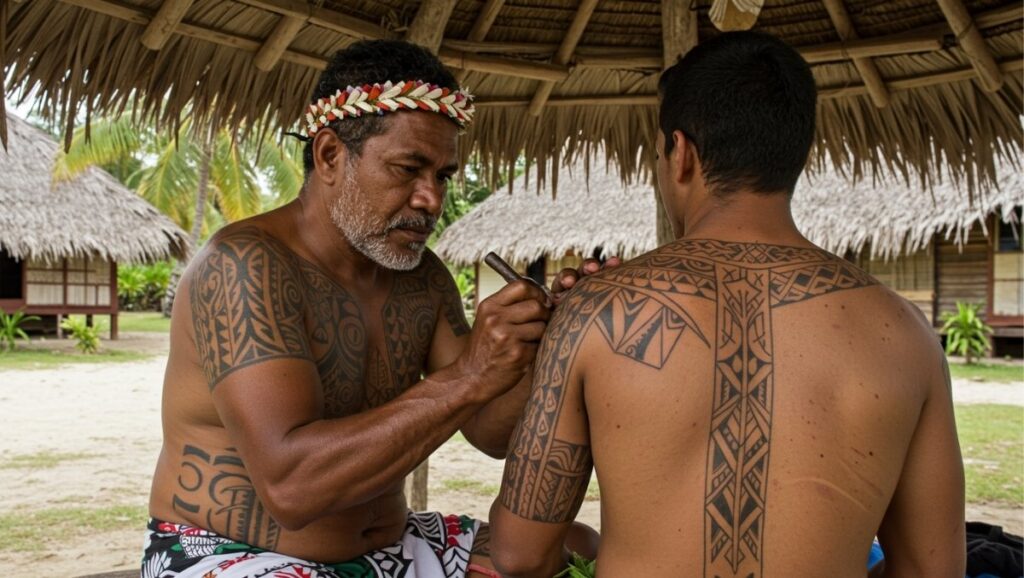
The Veiqia Tradition – Women and the Language of the Skin
In the heart of Fijian culture lies the Veiqia tradition, an ancient tattooing art created exclusively for women. This ritual was a rite of passage, marking a young woman’s journey into adulthood and symbolizing her readiness for marriage, fertility, and social belonging.
For Fijian Women, receiving veiqia was both an honor and a duty. Guided by elder women, the process followed strict ceremonial customs where chants, blessings, and offerings accompanied each mark. Every design carried a purpose:
- Patterns on the arms and hands represented a woman’s skill, industriousness, and service to the community. They indicated her ability to weave, cook, and care — vital traits in sustaining family and village life.
- Motifs along the torso embodied fertility, endurance, and spiritual harmony. The designs often resembled flowing lines that connected the heart to the womb, symbolizing inner strength and divine protection.
- Designs near the navel and thighs signified readiness for motherhood and devotion to family lineage. These intimate markings were considered sacred and were believed to connect the bearer to her maternal ancestors.
Beyond its beauty, veiqia embodied the cultural significance of veiqia — turning the body into a living manuscript of ancestry and faith. These Fijian female tattoo patterns celebrated womanhood and the sacred link between body, spirit, and lineage.
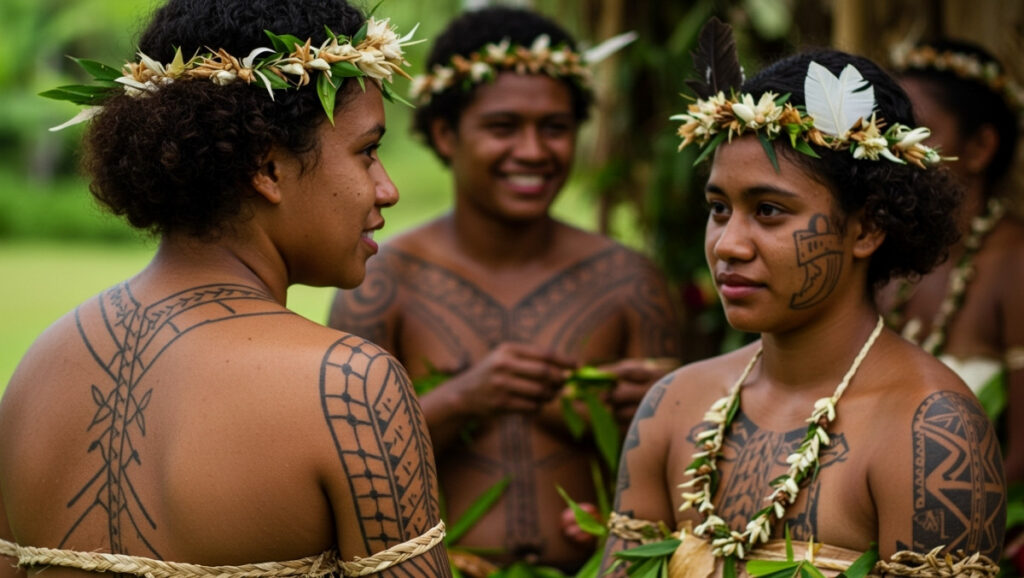
Tattoo Tools and Techniques – The Craft Behind the Pain
The art of traditional Fijian blended skill, endurance, and sacred ritual. Every session was guided by respect for the ancestors and carried out with precision and prayer. Using tools handmade from nature, Fijian tattoo masters transformed pain into purpose — a process central to Fijian tribal tattoo designs and identity.
Traditional tools included:
- Teeth comb: The main tattooing tool, made from shark teeth, bird bone, or turtle shell. Different comb sizes created varied line thicknesses and depths.
- Soot ink: Produced from burnt coconut shells mixed with oil or water, this black pigment represented the union of fire and earth — a sacred blend believed to carry spiritual energy.
- Tapping sticks: A pair of wooden rods used to strike the comb, embedding ink into the skin rhythmically. The tapping created a hypnotic rhythm that guided both artist and wearer into a meditative state.
The process was slow and deliberate. Before beginning, Fijian elders offered blessings, and the recipient prepared mentally through fasting or prayer. Each tap of the comb carried rhythm, pain, and meaning — transforming the body into a sacred canvas where craftsmanship met courage.
Together, these instruments defined the core of indigenous tattoo rituals in Fiji, where sound, rhythm, and devotion transformed the act into a ceremony.
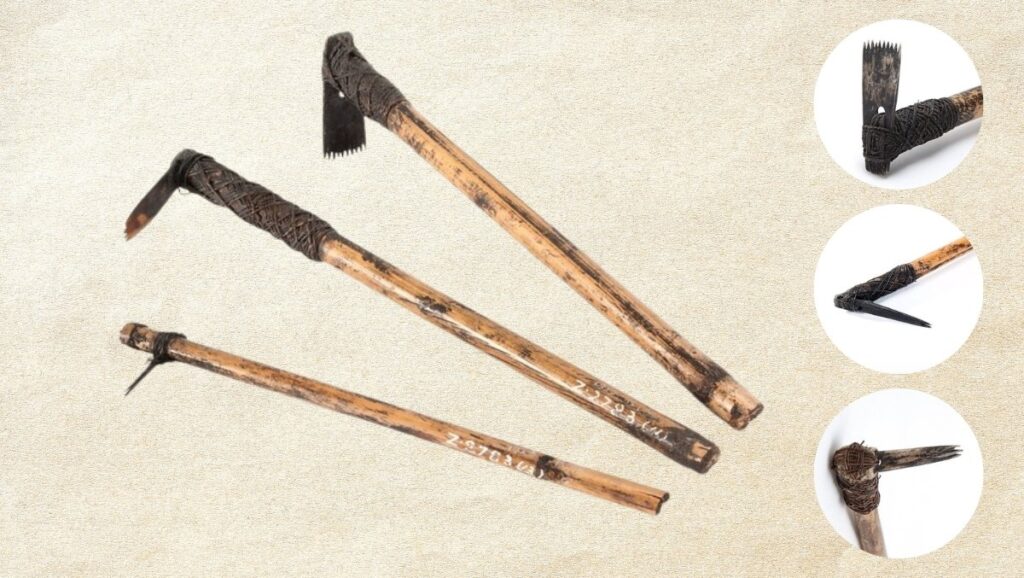
The Meanings and Patterns of Traditional Fiji Tattoos
Every line in a tribal ink of Fiji carries a message — a story etched in ink that speaks of ancestry, spirituality, and belonging.
Motifs often follow geometric precision and repetition, symbolizing harmony, order, and balance between humans and the cosmos. Certain elements were reserved for specific groups, such as Chiefs, warriors, or women marked by the veiqia tradition. Others represented collective identity — the tribe, the land, and the ancestral spirits guiding them.
| Pattern / Symbol | Cultural Meaning & Function | Spiritual Association | Common Wearers |
| Triangular patterns | Represent clan hierarchy and family lineage; signifies unity under a chief. | Protection and ancestral blessing. | Men, Chiefs, Elders. |
| Curved waves | The symbol of the ocean and life journey is a key in South Pacific tattoo art. | Life cycles, guidance of the sea spirits. | Both genders. |
| Dots & linear motifs | Fertility, femininity, balance in nature. | Connection to creation goddesses. | Fijian Women (Veiqia). |
| Shark teeth | Courage, defense, and warrior spirit. | Blessing from sea gods. | Warriors and Tribal Guards. |
| Spirals and lines | Represents eternity, continuity of generations. | Eternal ancestral link. | All community members. |
| Cross-hatched motifs | Mark social alliances and tribal identity. | Peace and kinship between clans. | Chiefs, Diplomats. |
Each of these patterns serves as a sacred code of identity, translating the unseen — belief, duty, and memory — into art. To wear a Fijian tattoo was to carry one’s story in plain sight, a living reminder that the body is not only flesh, but the keeper of history and spirit.
Revival and Cultural Renaissance in Modern Fiji
The art of Fijian ancestral tattooing has entered a powerful new chapter — one of rediscovery, pride, and healing. Once suppressed during colonial rule, this sacred practice is now returning through the efforts of artists, scholars, and cultural guardians determined to preserve Fijian tattoo heritage.
One of the most influential movements in this revival is the Veiqia Project, a collaborative initiative led by Fijian women artists and researchers. By studying historical records, oral stories, and ancestral motifs, the project has reignited awareness of the veiqia tradition — restoring its place as a cornerstone of Fijian identity and Polynesian tattoo symbolism.
Across the islands, the cultural renaissance continues to grow:
- Artists are reinterpreting ancient designs using both hand-tapping and modern tattoo machines, blending authenticity with accessibility. Many now include patterns inspired by ancestral markings in Fiji, connecting contemporary wearers to their lineage.
- Women are reclaiming Fijian female tattoo patterns as acts of resistance and identity, redefining the cultural significance of Veiqia as not just a mark of beauty, but a declaration of resilience and belonging.
- Elders and Chiefs serve as cultural mentors, sharing the prayers, taboos, and indigenous tattoo rituals Fiji once practiced before colonization — ensuring these spiritual dimensions are not lost in the modernization of the craft.
Together, these efforts turn skin into story once more. Every revived design, every shared memory is proof that cultural Fijian lives — not frozen in history, but alive and evolving in the spirit of a people who still carry their ancestors beneath the surface.
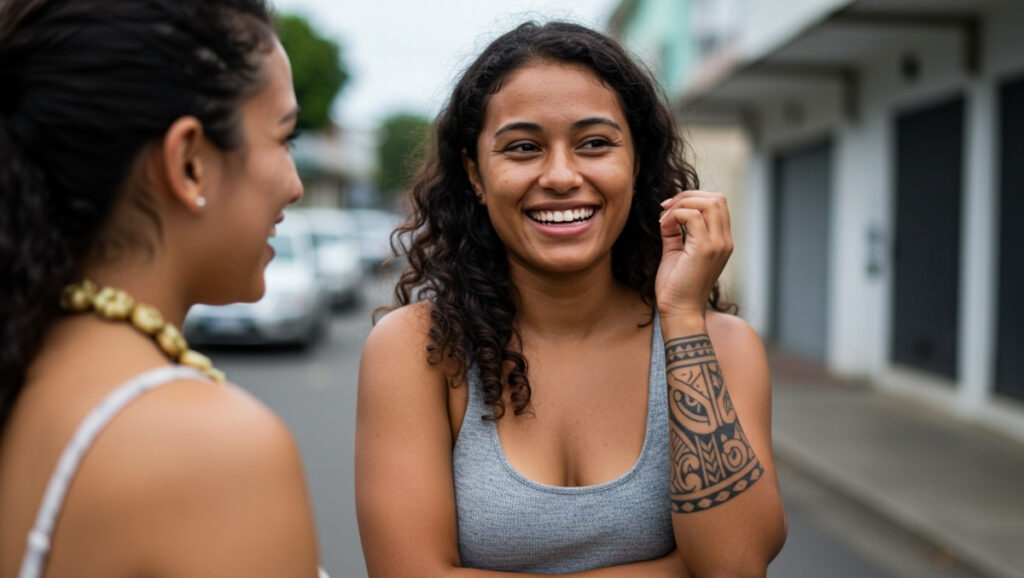
Conclusion – The Living Legacy of Ink and Spirit
The art of the traditional Fiji tattoo continues to stand as a timeless expression of devotion, courage, and cultural pride. It is more than body art — it is a sacred tradition that preserves Fijian spirituality and identity, linking generations through ink, rhythm, and ritual. The enduring Fijian veiqia tattoo tradition reminds every islander that heritage is not something worn for beauty alone, but something lived and carried with reverence.
Tattooing in Fiji is not about aesthetics alone — it is an ancestral dialogue, a conversation between the past and the present, where ink becomes spirit and pain transforms into pride.
FAQs
Who practiced the Veiqia tattoo in Fiji?
The Veiqia tattoo was practiced by Fijian women, guided by female elders who performed the ritual as a sacred rite of passage into adulthood.
u003cstrongu003eAre traditional Fiji tattoos still practiced today?u003c/strongu003e
Yes. Through cultural revival movements like the Veiqia Project, traditional Fijian tattoos are being rediscovered and reinterpreted by modern artists and cultural practitioners.
Were Fijian tattoos only for women?
No. While Veiqia was specific to women, Fijian men, including warriors and chiefs, also received tattoos representing status, bravery, and tribal identity.
What materials were used for Fijian tattoo ink?
Traditional ink was made from soot of burnt coconut shells mixed with oil or water, creating a natural black pigment used in sacred tattooing rituals.
Greetings! Teresa Finn here, passionate about exploring Polynesian culture and history, especially its holidays and anniversaries. Join me as we unveil the captivating stories behind these traditions, making every discovery a profound and enlightening experience.

